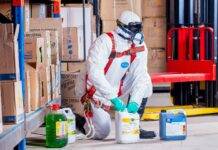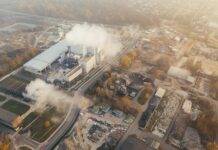
Chemical Spill Response: Containment and Cleanup
Introduction
Chemical spills pose significant risks to both human health and the environment. A swift and effective response is crucial to minimize the potential consequences of a spill. This article focuses on the key aspects of chemical spill response, emphasizing containment measures and proper cleanup procedures to ensure a safe and efficient resolution.
Chemical Spill Containment Measures
- Immediate Identification of the Spill
- Training personnel to recognize and report chemical spills promptly
- Encouraging a culture of awareness to ensure swift response when a spill occurs
- Isolation of the Spill Area
- Erecting barriers or using absorbent materials to isolate the spill area
- Preventing the spread of the chemical and limiting its impact on surrounding areas
- Activation of Emergency Alarms
- Implementing an alarm system to alert personnel and relevant authorities
- Facilitating a quick response by notifying all individuals in the vicinity and initiating emergency protocols
- Evacuation Procedures
- Establishing evacuation procedures for the spill area and adjacent zones
- Ensuring the safety of personnel by relocating them to designated assembly points away from the spill site
- Identification of the Spilled Substance
- Utilizing chemical identifiers or material safety data sheets (MSDS) to identify the spilled substance
- Informing emergency responders and cleanup teams about the nature of the chemical for appropriate handling
- Use of Containment Booms for Liquid Spills
- Deploying containment booms for spills involving liquids
- Creating a physical barrier to prevent the further spread of the chemical, especially in water environments
- Absorbent Materials for Solid and Liquid Spills
- Employing absorbent materials such as spill kits, absorbent pads, or granular substances
- Facilitating the absorption and containment of spilled chemicals to minimize their impact
Chemical Spill Cleanup Procedures
- Personal Protective Equipment (PPE)
- Ensuring all cleanup personnel wear appropriate PPE
- Providing protective clothing, gloves, goggles, and respiratory protection to minimize exposure to hazardous substances
- Ventilation and Air Quality Monitoring
- Establishing proper ventilation in the cleanup area
- Monitoring air quality to ensure that no hazardous vapors or gases pose risks to cleanup personnel
- Removal of Contaminated Materials
- Removing and properly disposing of contaminated materials
- Ensuring that all items exposed to the spilled chemical are safely collected and disposed of according to regulations
- Decontamination Procedures
- Implementing decontamination procedures for cleanup personnel and equipment
- Preventing the spread of contaminants by thoroughly cleaning and decontaminating all surfaces and tools used during the cleanup
- Neutralization of Acids or Bases
- Using appropriate neutralizing agents for acid or base spills
- Neutralizing the chemical to render it less hazardous before cleanup, following safety guidelines and compatibility considerations
- Monitoring Residual Contamination
- Conducting thorough assessments to monitor and address any residual contamination
- Verifying that the cleanup process effectively removes all traces of the spilled chemical to prevent long-term environmental impact
- Documentation of Cleanup Activities
- Documenting all cleanup activities, including the chemicals involved, cleanup methods, and disposal procedures
- Maintaining comprehensive records for regulatory compliance and future reference
Conclusion
In conclusion, a well-executed response to a chemical spill is essential to protect individuals, the environment, and property. Effective containment measures, immediate identification, and proper cleanup procedures are critical components of a successful response. By prioritizing safety, utilizing appropriate equipment, and following established protocols, organizations can mitigate the impact of chemical spills and contribute to a safer working environment.
Safety Data Sheets for Chemicals
What Is the Purpose of a Safety Data Sheet?
Frequently Asked Questions (FAQs)
- Why is immediate identification of a chemical spill crucial?
- Immediate identification allows for a swift response, including the isolation of the spill area, activation of emergency alarms, and implementation of evacuation procedures, minimizing the impact of the spill.
- What are the key components of chemical spill containment measures?
- Chemical spill containment measures include isolating the spill area, activating emergency alarms, evacuating personnel, identifying the spilled substance, and using containment booms or absorbent materials to prevent further spread.
- Why is personal protective equipment (PPE) essential in chemical spill cleanup?
- PPE is essential in chemical spill cleanup to protect personnel from exposure to hazardous substances. This includes protective clothing, gloves, goggles, and respiratory protection to minimize health risks.
- What is the importance of air quality monitoring during chemical spill cleanup?
- Air quality monitoring is crucial to ensure that no hazardous vapors or gases pose risks to cleanup personnel. Proper ventilation and monitoring help maintain a safe environment during the cleanup process.
- Why is documentation of cleanup activities important?
- Documentation of cleanup activities is important for regulatory compliance and future reference. It includes details such as the chemicals involved, cleanup methods, disposal procedures, and assessments of residual contamination.
- How can organizations effectively neutralize acids or bases during a chemical spill cleanup?
- Organizations can effectively neutralize acids or bases during a chemical spill cleanup by using appropriate neutralizing agents, following safety guidelines, and considering compatibility with the spilled chemical.
























